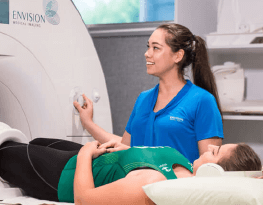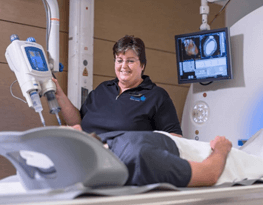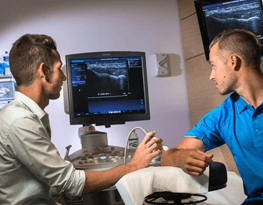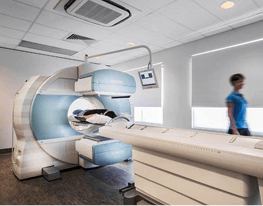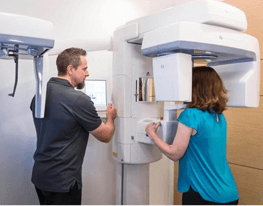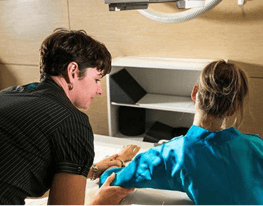What is an Ultrasound Abdomen/Renal/Pelvis?
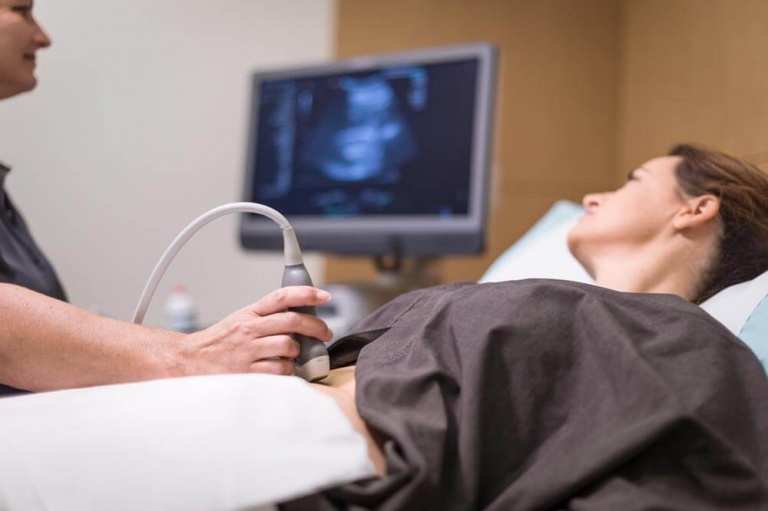
An Ultrasound Abdomen/Renal/Pelvis is a procedure that uses ultrasound imaging to take images of soft tissue and structures in your abdomen (stomach and torso area), kidney and bladder (renal) and pelvis (uterus and ovaries, or prostate). A complete abdominal ultrasound includes the liver, pancreas, gallbladder, kidneys, spleen, inferior vena cava, aorta and bladder.
The Ultrasound Abdomen/Renal/Pelvis is used as a diagnostic tool for many different conditions.
Ultrasound may also be used to guide interventional procedures such as FNAs and biopsies.
Ultrasound Abdomen/Renal/Pelvis
What happens during an Ultrasound Abdomen/Renal/Pelvis?
A. Before your scan
What to bring
- Your request form
- Any relevant previous imaging
- Your Medicare card and any concession cards
Preparation – the day of your procedure
For Abdomen and Renal scans, a 6 hour fast is required. For Renal and Pelvis scans, drink one litre of water one hour prior to your appointment time and refrain from emptying your bladder. You will be asked to fill out a questionnaire regarding your health status, medication, and any known allergies. You will be asked to remove jewellery and change into an examination gown for your scan.
B. During your Ultrasound Abdomen/Renal/Pelvis
Procedure
You will be made comfortable on the examination table and asked to uncover the area being examined.
Gel will be applied to the area being imaged to help create a good contact between you and the ultrasound probe. The probe will be placed directly onto the gel and your skin for the duration of the examination. The sonographer will move the probe around on your skin at different angles to obtain images.
Your ultrasound will be performed by a Radiologist (medical specialist) or a sonographer (a specially trained technologist). Because the examiner is interpreting moving images on a screen a high degree of concentration is required. Pelvic female scans will generally require a transvaginal approach. A special probe is covered with either a latex or non-latex band. Sterile gel is applied. The probe is sterilised between patients’ use. A consent form will need to be signed by the patient prior to the transvaginal scan.
Ultrasound examinations are not painful and generally not invasive but may be uncomfortable particularly if you need to move a body part that causes you discomfort.
Most ultrasound examinations will be completed within 30 minutes. It is not unusual for the radiologist to come in and speak with you and view the images on the screen. At the end of the procedure the gel is simply wiped from your skin so that it does not mark your clothes.
Risks and side effects
Ultrasounds are a very low risk procedure and complications are rare however you should be informed of the possible risks and side effects.
Risks associated with this procedure include:
- If scanning is performed over an area of tenderness, you may feel pressure or minor pain from the transducer.
Any medical procedure can potentially be associated with unpredictable risks.
Who will perform my Ultrasound Abdomen/Renal/Pelvis?
Your ultrasound will be performed by a Radiologist (medical specialist) or a sonographer (a specially trained technologist).
Ultrasound Abdomen/Renal/Pelvis
What happens after an Ultrasound Abdomen/Renal/Pelvis?
How do I get my results?
After your appointment, the information from your scan is interpreted by Envision’s Radiologist before delivery of a report to your doctor.
Post-procedure
You should be able to go about your daily activities after your appointment.
Medical Imaging Practice Perth
Types of Imaging
At Envision, we offer the most sought-after types of imaging for diagnostics and treatments. Our Wembley headquarters is the largest single-site radiology practice in Perth
